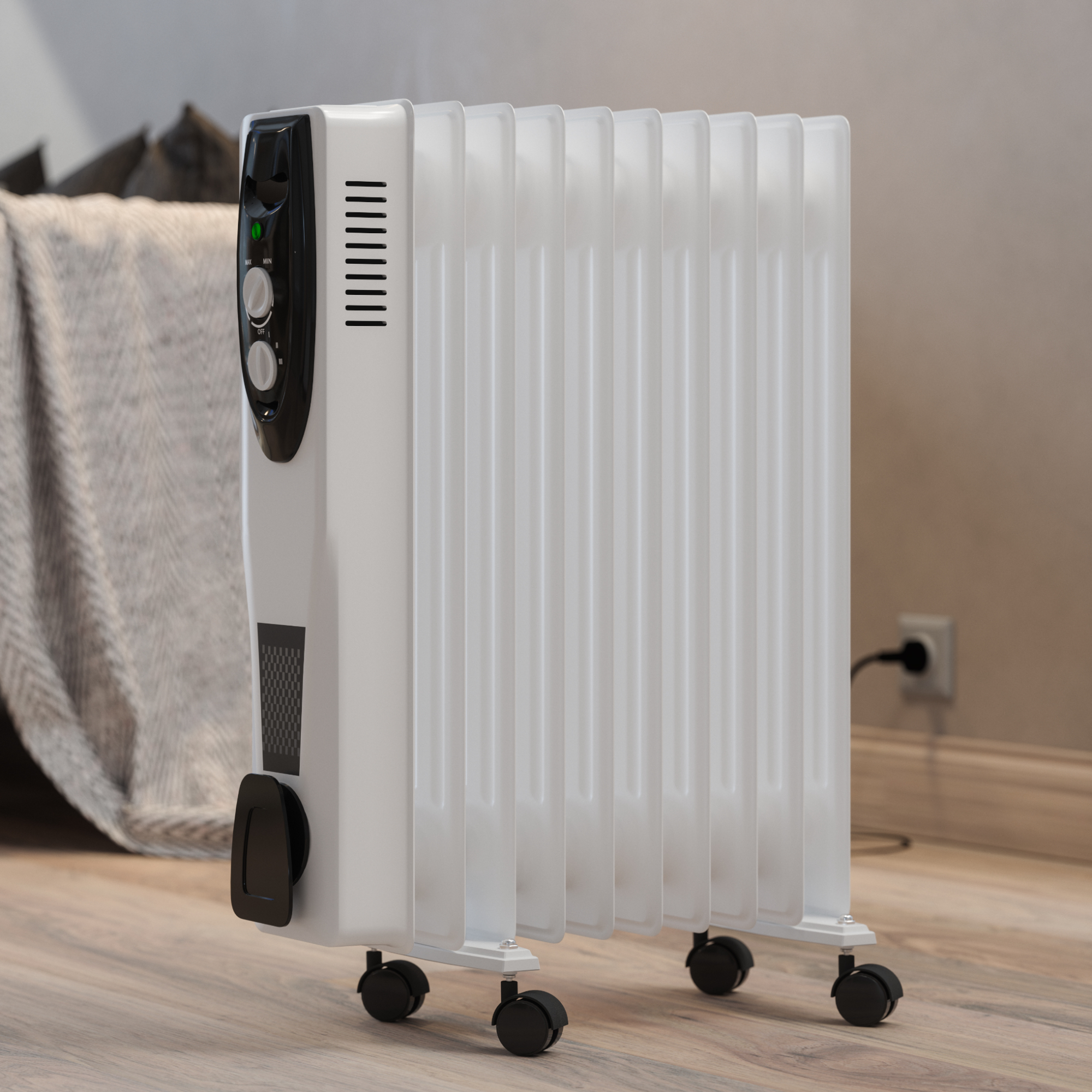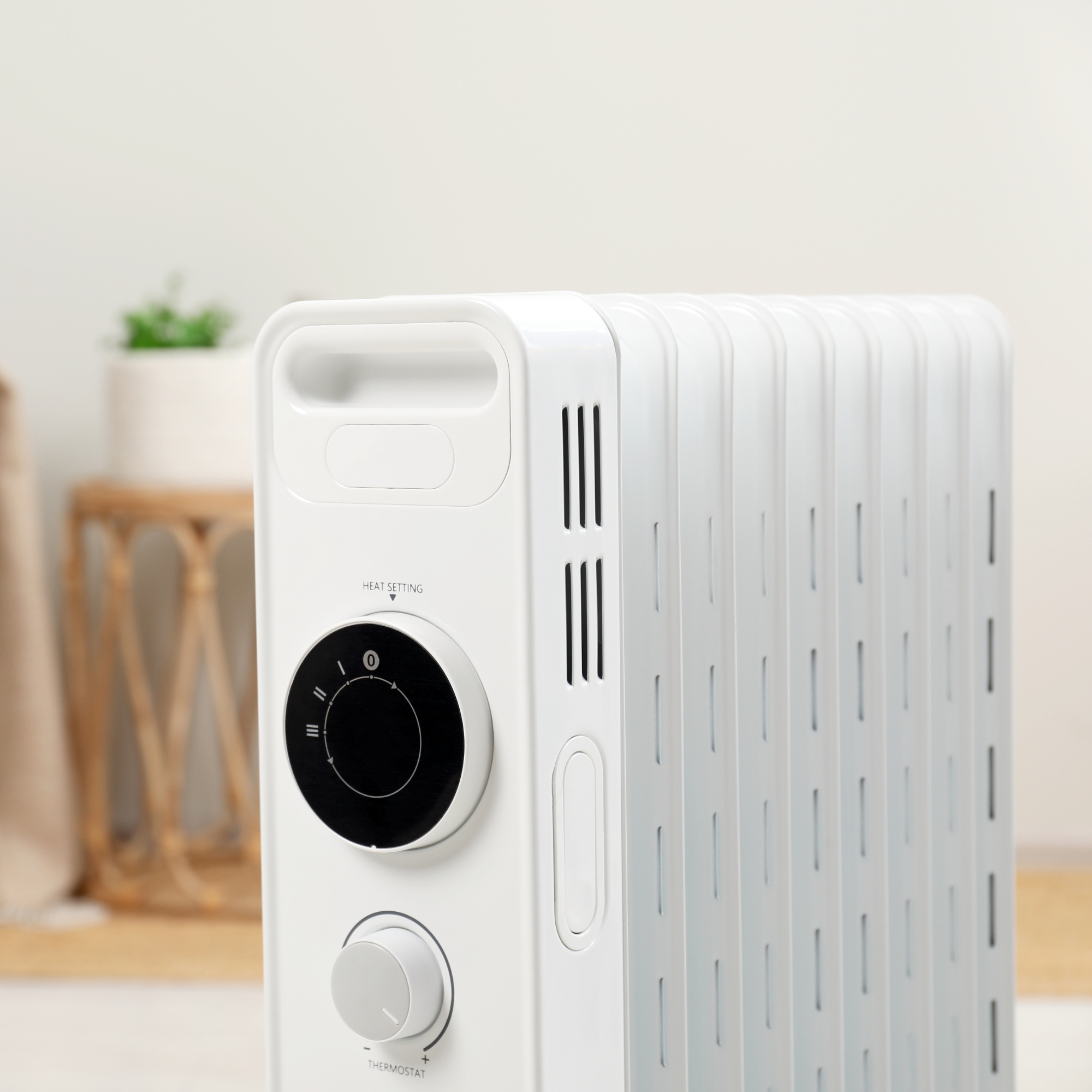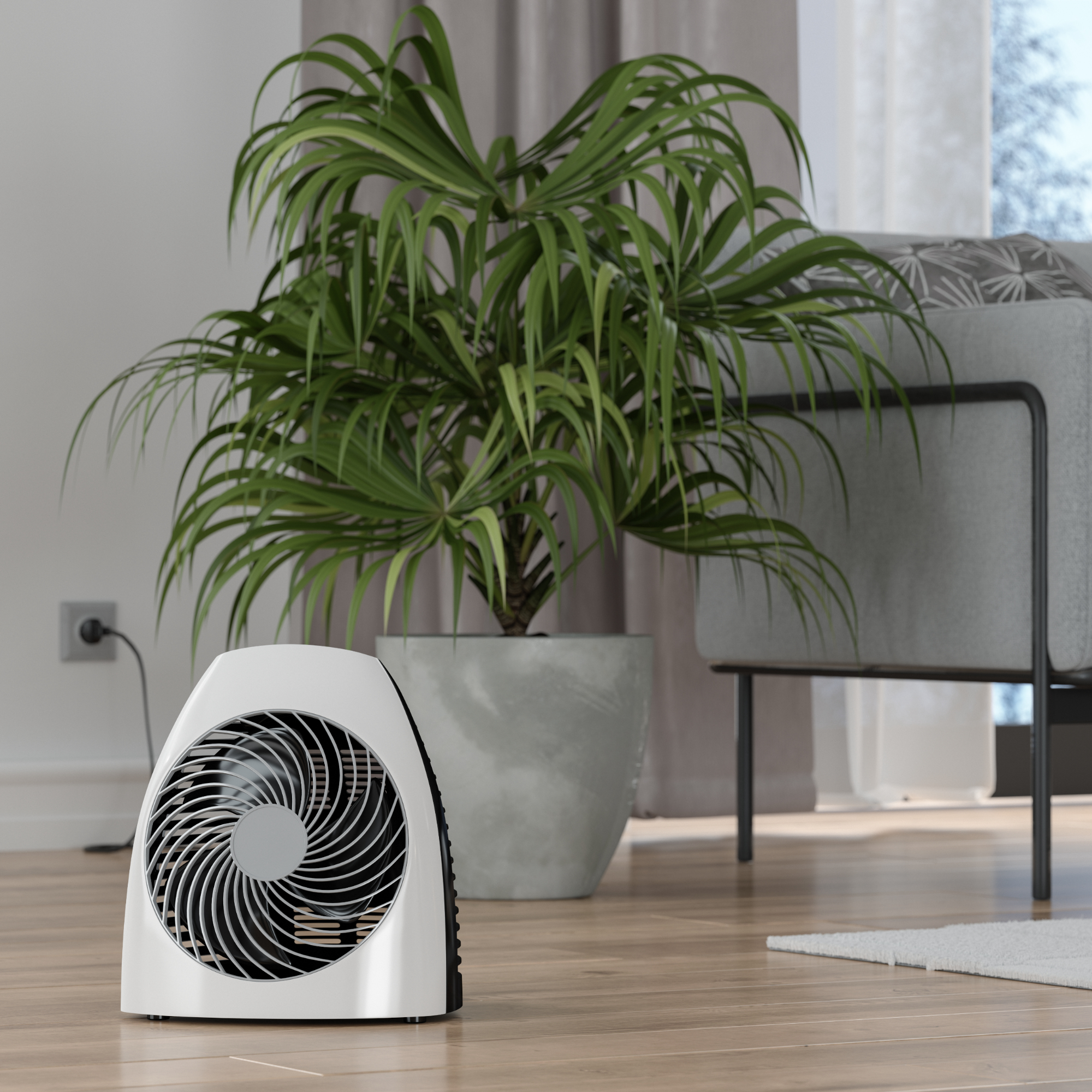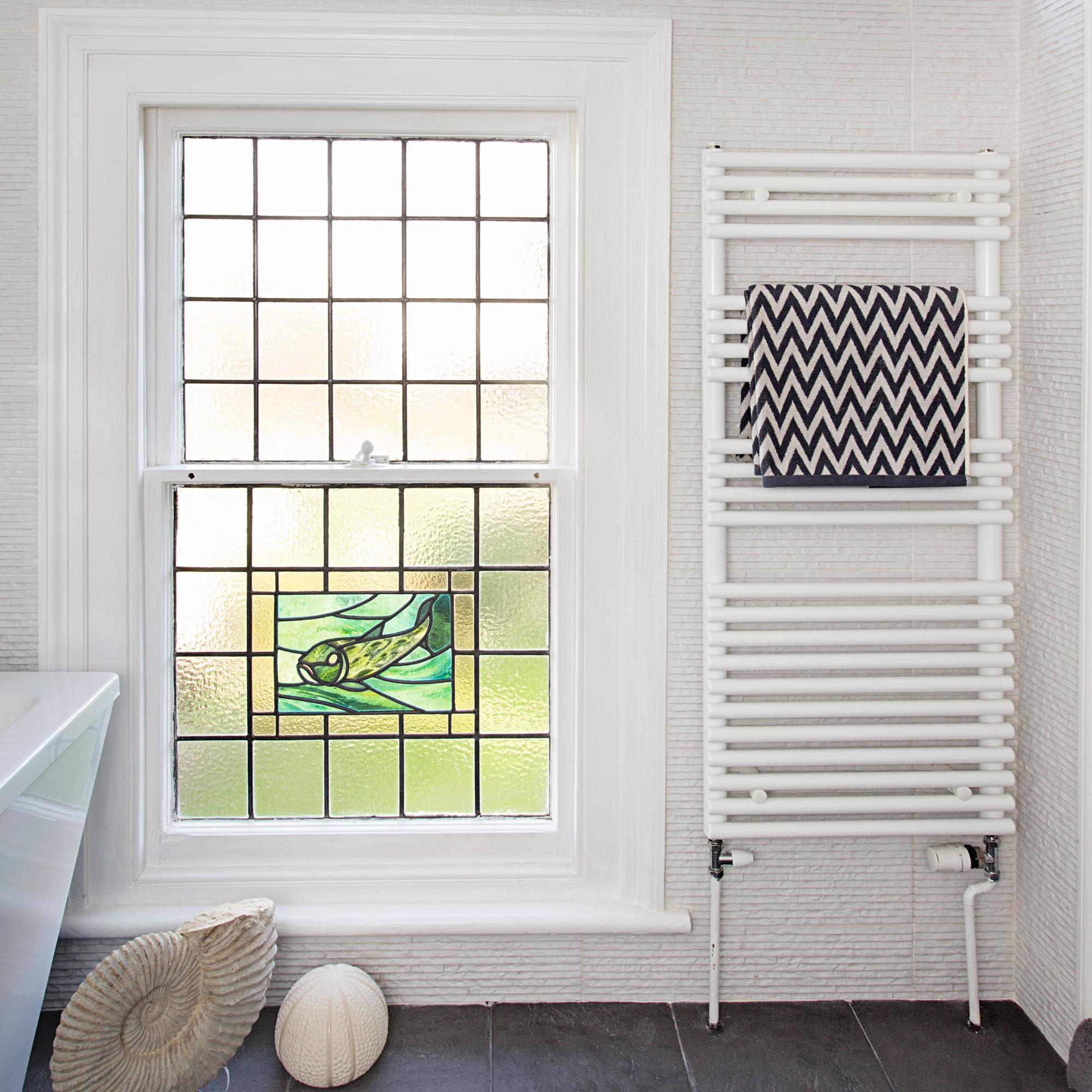
Temperatures are dropping across the UK as we're slowly transitioning into the colder season; and if you don't fancy cranking up the thermostat, using a portable electric heater is a convenient and cost-effective way to quickly heat up a room. However, what a lot of people don't know is that where you place them is just as important as choosing the right one.
Even if you have invested in the best electric heater knowing how to position it will ensure it reaches its full potential. Putting it in the right place will mean that you can use it safely and efficiently throughout the winter months, but placing it in the wrong spot could spell disaster.
As such, we asked experts to reveal the worst places to put an electric heater – and what you should do instead to avoid a grave electric heater mistake.
1. Near soft furnishings and curtains

It's likely that you're probably wanting to use your electric heater to add warmth to a cold living room or bedroom – rooms that are naturally more decked out in soft furnishings. However, it's important to keep these furnishings a safe distance away from any electric heaters.
'It's recommended that you keep your electric heater at least 1 metre away from flammable materials,' advises Nicholas Auckland, Trade Radiators' heating and energy expert. 'This is because electric heaters can get really hot and cause fires that can spread quickly and be incredibly dangerous.'
Soft furnishings encompass anything from bedding, sofas, throws, and more. This also includes the likes of curtains and drapes.
2. Directly against a wall
As a general rule of thumb, placing an appliance directly against a wall is highly advised against – as we noted when we looked into the worst places to put an air conditioner, for example – but even more so for an electric heater. 'Placing an electric heater too close to a wall can block the airflow, which reduces efficiency and increases the risk of overheating,' cautions David Miloshev, Fantastic Services' heating expert.
'The heater won't be able to distribute heat effectively throughout the room, so position it at least a few feet away from walls to ensure that heat can circulate properly,' he continues. If air circulation is an issue, David suggests considering a fan heater if you're looking to narrow down your search in the right type of electric heater.
3. Next to drafty windows and doors

While placing an electric heater next to windows and doors with a draft might make sense in our heads, this is unfortunately counterproductive. Although the heater will be producing warm air, simultaneously letting cold air in will drive up the cost of running an electric heater as it has to work harder to compensate.
'If you have an electric heater turned on, it's recommended not to open any windows or doors so heat is maximised,' urges Nicholas. This is the most foolproof way to keep your house warm in winter when using a portable heating solution.
4. High humidity areas

It's a known fact that bathrooms, utility rooms, and garages can be notoriously cold, especially in the winter months. However, David warns that most electric heaters are not designed to be used in these damp environments.
'Water and electricity are a dangerous combination, and using a heater in such areas can lead to electric shocks or short circuits,' he explains. Even if an electric heater doesn't directly make contact with water, the moisture produced can still potentially damage the appliance.
'Although standard radiators are suitable in all locations, electric heaters aren't unless it's specified particularly,' says Nicholas. If you need the extra heat in a bathroom, David recommends opting for a heater specifically designed for these areas, such as a bathroom-safe electric heater with proper insulation.
For other damp-prone rooms in your home, it's worth considering enlisting the help of the best dehumidifier first and foremost to ensure damp walls are dried out so you can make the most of an electric heater's capabilities.
5. Closed spaces
Lastly, avoid placing an electric heater in closed spaces, such as behind, below, or in between large furniture. This is for the same reasons related to avoiding putting the heater directly against a wall.
'Electric heaters need space around them so that airflow isn't compromised, as this can cause the electric heater to overheat and become a fire hazard,' explains Nicholas. 'This can also reduce the efficiency of the heater, as it would need to be turned up on a higher setting for it to work optimally.'
For the best results, keep your electric heater in a central location unobstructed by furniture.
Shop our top-rated electric heaters
All in all, electric heaters are a fantastic option for adding that bit of extra warmth where you need it, but placement is key. By avoiding these unsafe and inefficient spots around the house, you can not only rest assured that you're keeping your home safe but also that your heater is running more than effectively to last you through the cold winter months to come.







